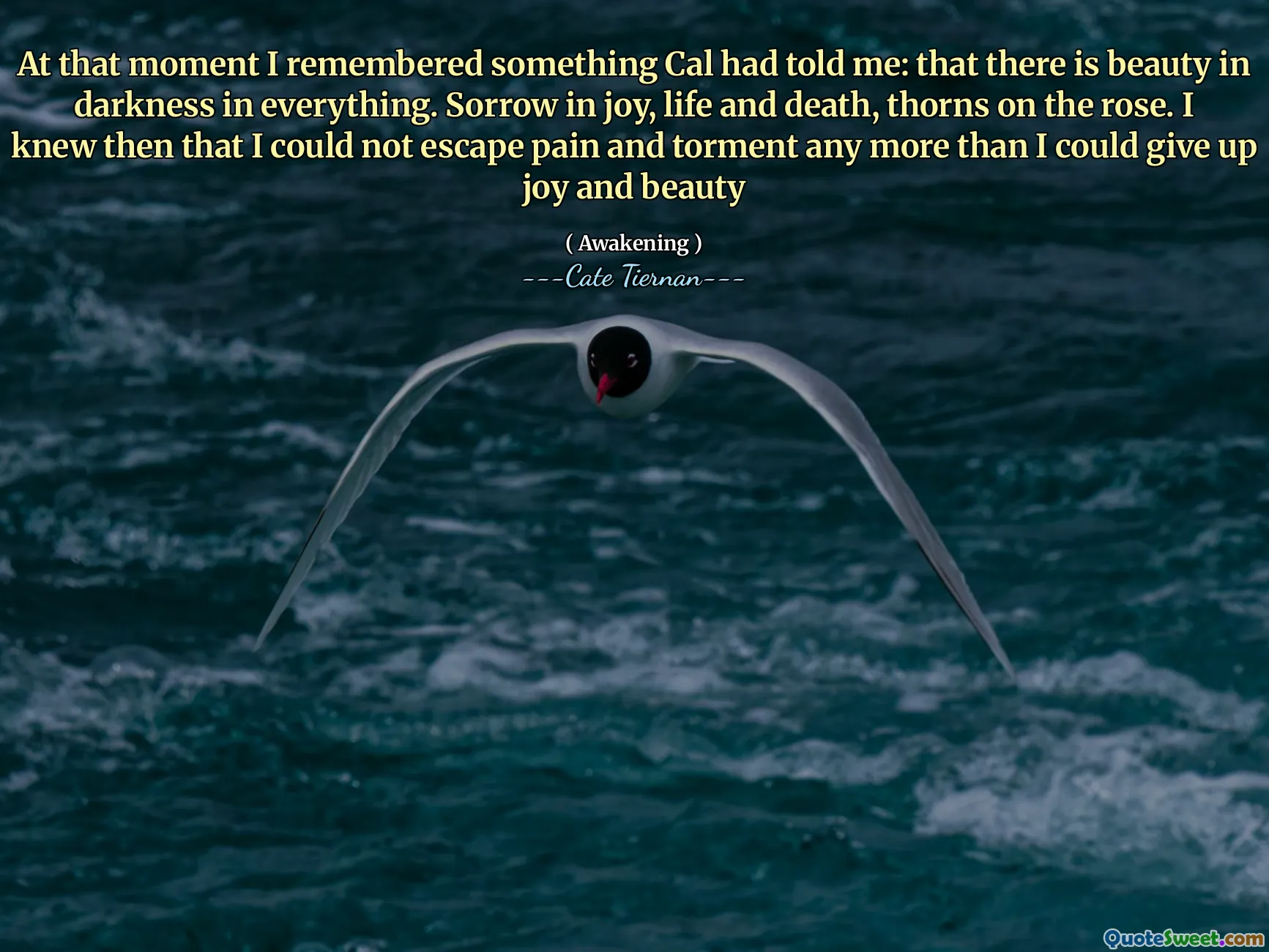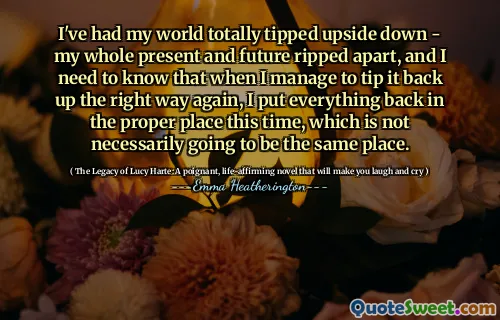
At that moment I remembered something Cal had told me: that there is beauty in darkness in everything. Sorrow in joy, life and death, thorns on the rose. I knew then that I could not escape pain and torment any more than I could give up joy and beauty
This quote captures the profound understanding that every aspect of life—both its light and dark components—holds intrinsic value and beauty. It speaks to the interconnectedness of opposing experiences, such as sorrow and joy or life and death, emphasizing that one cannot exist without the other. This balance is not a limitation but rather an inherent reality that shapes our human experience.
Reflecting on this, I am reminded of the inevitable dualities that color our existence. Pain and torment, often viewed negatively, are portrayed here as inseparable from joy and beauty. This suggests a holistic view where hardships intensify the appreciation of happiness and meaning. The metaphor of "thorns on the rose" elegantly illustrates that beauty and adversity coexist, shaping something unique and profound.
It also touches on the acceptance of life's complexity rather than the futile desire to escape hardship. The realization that avoiding pain is as impossible as abandoning joy challenges us to embrace experiences fully and authentically. In a world that often promotes the pursuit of constant happiness or perfection, this perspective is grounding. It encourages resilience and the recognition that growth often emerges from struggle.
Moreover, the quote resonates deeply on a philosophical and emotional level. Beauty found in darkness suggests that times of difficulty or reflection can reveal hidden truths and strengths. It acknowledges the cyclical and nuanced nature of emotions, validating experiences of suffering as meaningful rather than merely negative.
Ultimately, this passage inspires a mindset of acceptance and appreciation for life's full spectrum. It encourages us to find grace amid adversity and to understand that pain does not diminish beauty but rather highlights it. This insight fosters a richer, more compassionate engagement with ourselves and the world around us.






